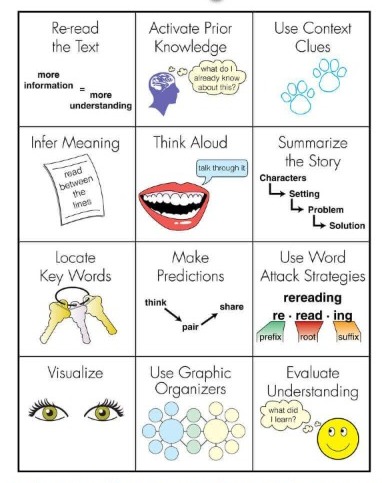Strategy for Reading
By understanding that letters make sounds, we can blend those sounds together to make whole sounds that symbolize meaning we can all exchange with one another. By mastering the symbols and their most common contexts, reading becomes a practice in thought–less about decoding and more about understanding.
Without getting too Platonic about it all, reading doesn’t change simply because you’re reading a text from another content area. Only sometimes it does.
Science content can often by full of jargon, research citations, and odd text features.
Social Studies content can be an interesting mix of itemized information, and traditional paragraphs/imagery.
Literature? Well, that depends on if you mean the flexible form of poetry, the enduring structure of a novel, or emerging digital literature that combines multiple modalities to tell a story.
This all makes reading strategies somewhat content area specific. Stopping (maybe the most undervalued strategy ever) and Rereading might make more sense in science, while Visualization and Text Connections may make more sense reading literary works. Questioning the Text may make equal sense in both.
But if you’d like to start with a basic set of strategies, you could do worse than the elegant graphic above from wiki-teacher.com. (Useful site, by the way.) It lists 12 basic reading comprehension strategies, to which we’ve added 13 for a full 25.
Looking for related curricula ideas? Check out our Reading Comprehension Strategy Resources
25 Reading Strategies That Work In Every Content Area
1. Reread
2. Activate Prior Knowledge
3. Use Context Clues
4. Infer
5. Think Aloud
6. Summarize
7. Locate Key Words
8. Make Predictions
9. Use Word Attack Strategies
10. Visualize
11. Use Graphic Organizers
12. Evaluate Understanding
To the above list, we’d add:
13. Question the Text
14. Stop!
15. Monitor & Repair Understanding (While Reading)
16. Paraphrase
17. Annotate the Text
18. Adjust Reading Rate
19. Prioritize Information
20. Use Graphic Notetaking
21. Predict
22. Set a Reader Purpose
23. Text-connections (text-to-self, text-to-text, text-to-world)
24. Skim
25. SSQ (Stop, Summarize, Question)
We’ll gather these and put them in a Before Reading, During Reading, and After Reading matrix soon. Only because we like you.
25 Reading Strategies That Work In Every Content Area
Referency: https://www.teachthought.com/literacy/reading-strategies/


Post a Comment